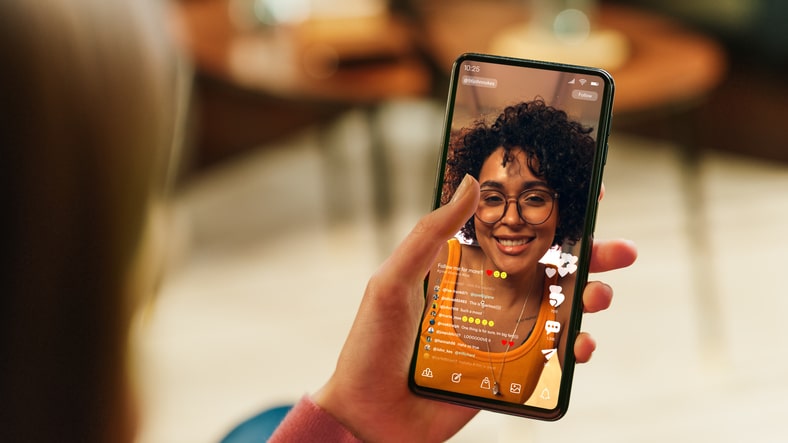With two ‘professionals’ signing up to the site every second, LinkedIn is the global community of business professionals, but how can you tap into this huge audience to launch campaigns that achieve real, tangible business results?

Should you use LinkedIn for business growth?
LinkedIn reports to have 500 million members, 61 million senior-level influencers, and 40 million decision-makers using the platform. On top of this, LinkedIn is the most-used social media platform amongst Fortune 500 companies, making it the go-to site to target businesses and professionals.
It’s unsurprising then, that according to HubSpot, LinkedIn is 277% more effective at lead generation than Facebook and Twitter. Gone are the days of LinkedIn as merely a networking site, it is now a content platform bursting with professionals and brands eager to share their thoughts and insights. But when using LinkedIn for a B2B marketing campaign, where do you start?
How to choose the right LinkedIn approach for your business?
When developing a LinkedIn strategy for your business it’s important to work out a specific goal, be it brand awareness; website traffic; lead generation; or video views. Once these are in place, you can consider your method for achieving these aims.
LinkedIn Advertising provides you with three distinct formats of advertising – Sponsored Content Ads, Text Ads, and InMail ads. Each is very different from the other and carries its own benefits, so it’s important to ensure you choose the right option for your goals.
What are sponsored content ads on LinkedIn?
Sponsored Content Ads are, as the name suggests, designed to promote a piece of content, and therefore work very well as part of a Content Marketing campaign to generate awareness of your business and the services that it offers.
When to use Text Ads on LinkedIn?
Similar to Sponsored Content ads, Text ads can be used to drive awareness of your business, however these tend to appear at the top, bottom or side of a LinkedIn webpage, rather than within the feed itself. A lot of the best practices that apply to Sponsored Content Ads, also apply to Text ads, including the approach you take when crafting the headline and the description.
How should you use InMail ads on LinkedIn?
Finally, InMail Ads allow you to email anyone on the LinkedIn network. Using LinkedIn’s demographic data and rich targeting capabilities, brands can deliver real-time messages to relevant professional audiences, meaning they require a completely different approach from the others. These types of ads tend to work best when they are kept short, sweet, and friendly – under 1,000 characters to ensure the recipient reads the message, and with a tone that clearly indicates there’s a human behind the InMail.
How to create effective content for LinkedIn?
It’s important to consider the content you’re looking to serve in relation to your campaign goals and ad type. For example, images drive better results for both Sponsored Content and Text Ads, whereas interactive hyperlinks tend to drive a higher CTR in Sponsored InMail campaigns. Your content should be 50% about your brand, 25% about your sector and importantly 25% about themes and issues that interest you.
When it comes to Sponsored Content Ads and Text Ads, the shorter the better. Results have shown that having fewer than 150 characters helps content to perform better, while a strong, clear, and specific call to action is also absolutely crucial.
If you’re sending out sponsored InMail, it’s important to customise the content and send it from an employee rather than the company page. This helps to keep things personal and form deeper relationships, potentially resulting in greater conversions.
How to select a LinkedIn audience?
With such a vast number of professionals on the platform, it’s important to make sure your content is being seeded to only the relevant profiles, to maximise its efficiency. Fortunately, LinkedIn’s sophisticated targeting capabilities allow you to use advanced searches to filter through and find your ideal audience. For the start of the campaign, it’s best to have a somewhat wider audience so you can gather intelligence. Choose just two or three key criteria (industry and seniority are good starting points) and use the “audience expansion” option in Campaign Manager.
After this you’re able to monitor the campaign performance and see which audience demographics are proving most receptive to your ads, allowing you to optimise the campaign. However, as you go through this optimising process it’s important not too narrow the audience too far, as LinkedIn reports that the most successful campaigns target an audience of around 500,000.
How can you track your business results on LinkedIn?
A successful campaign is about achieving meaningful, measurable business outcomes, and thankfully LinkedIn has plenty of metrics to measure the performance of your campaign – clicks, likes, shares, comments, company follows, and downloads are all indicators of audience engagement.
For awareness-based campaigns, using trackable links in your ads also means you can see the increase of traffic coming through to your website in Google Analytics as a direct result of your campaign, as well as how long visitors stay when they get there, which are all good indicators of whether people are engaging with your content.
For lead-generation campaigns, you can calculate the cost-per-lead through LinkedIn’s metrics to achieve a measurable ROI. Additionally, HubSpot offers this framework for qualifying leads based on prospect goals, needs, budget, timeline, etc.
These data insights should also inform your future actions and decisions so that next time round, you can perform even better.




